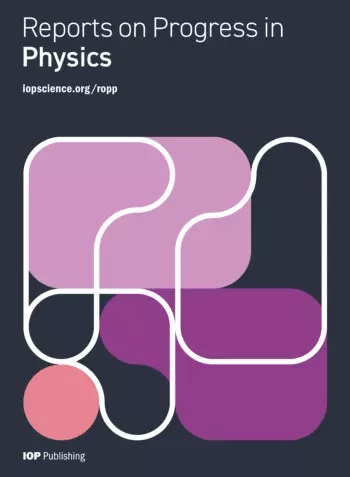Certification of genuinely entangled subspaces of the five qubit code via robust self-testing.
IF 20.7
1区 物理与天体物理
Q1 PHYSICS, MULTIDISCIPLINARY
引用次数: 0
Abstract
Self-testing provides a device-independent framework for certifying quantum properties based solely on input-output statistics while treating quantum devices as black boxes. It has evolved significantly from its origins in bipartite systems to applications in multipartite entanglement and, more recently, genuinely entangled subspaces. Notably, It has been revealed that the logical subspaces of numerous stabilizer quantum error correction codes are exclusively composed of genuinely multipartite entangled states, opening new avenues for developing device-independent tools to characterize these subspaces. In this work, we leverage the self-testing technique to certify genuinely entangled logical subspaces within the five-qubit code using both photonic and superconducting platforms. This is achieved by preparing informationally complete logical states, simulating Pauli errors on a physical qubit, and testing several stabilizer-formalized Bell inequalities. Our certification is supported by an extractability measure of at least $0.828\pm0.006$ and $0.621\pm0.007$ for the photonic and superconducting systems, respectively. Our results demonstrate the feasibility of device-independent certification of general entangled quantum structures in experimental settings, extending beyond quantum states and quantum measurements.基于鲁棒自测试的五量子位码真纠缠子空间认证。
自我测试提供了一个独立于设备的框架,用于仅基于输入输出统计数据来认证量子特性,同时将量子设备视为黑盒。它已经从它的起源在二部系统显著发展到应用在多部纠缠,最近,真正纠缠子空间。值得注意的是,研究揭示了许多稳定量子纠错码的逻辑子空间完全由真正的多部纠缠态组成,为开发与设备无关的工具来表征这些子空间开辟了新的途径。在这项工作中,我们利用光子和超导平台利用自我测试技术来证明五量子位码中真正纠缠的逻辑子空间。这是通过准备信息完备的逻辑状态,模拟物理量子位上的泡利错误,以及测试几个稳定器形式化的贝尔不等式来实现的。我们的认证得到了光子和超导系统的可提取性测量的支持,分别为至少0.828\pm0.006美元和0.621\pm0.007美元。我们的研究结果证明了在实验环境中对一般纠缠量子结构进行器件无关认证的可行性,扩展到量子态和量子测量之外。
本文章由计算机程序翻译,如有差异,请以英文原文为准。
求助全文
约1分钟内获得全文
求助全文
来源期刊

Reports on Progress in Physics
物理-物理:综合
CiteScore
31.90
自引率
0.00%
发文量
45
审稿时长
6-12 weeks
期刊介绍:
Reports on Progress in Physics is a highly selective journal with a mission to publish ground-breaking new research and authoritative invited reviews of the highest quality and significance across all areas of physics and related areas. Articles must be essential reading for specialists, and likely to be of broader multidisciplinary interest with the expectation for long-term scientific impact and influence on the current state and/or future direction of a field.
 求助内容:
求助内容: 应助结果提醒方式:
应助结果提醒方式:


